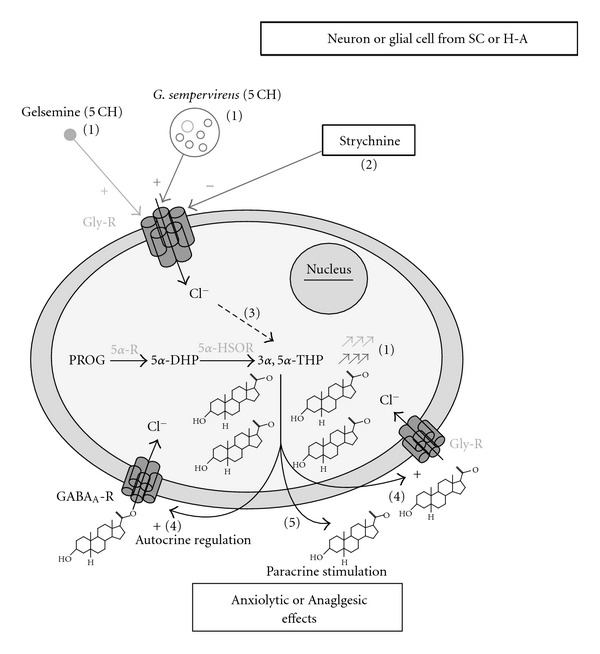Figure 8.

Effect of gelsemine (5 cH) or G. sempervirens (5 cH) on 3α,5α-THP production in the SC and H-A. (1) Gelsemine (5 cH) or G. sempervirens (5 cH) stimulated [3H]progesterone conversion into [3H]3,5-THP in SC and H-A slices. (2) Strychnine, the selective antagonist of glycine receptors (Gly-R), totally blocked the stimulatory effect of gelsemine (5 cH) or G. sempervirens (5 cH) on 3α,5α-THP production. (3) Further investigations are required for the identification of intracellular mechanisms triggered by gelsemine (5 cH) or G. sempervirens (5 cH) from Gly-R. However, the stimulatory action exerted by gelsemine (5 cH) or G. sempervirens (5 cH) on 3α,5α-THP production suggests that the intracellular cascade activated by these substances may increase the activity of 3α-HSOR which is the key 3α,5α-THP-synthesizing enzyme. [4, 5] Neurosteroid 3α,5α-THP newly synthesized by neurons or glial cells in the SC or H-A may modulate GABAA-R or Gly-R through autocrine (4) or paracrine (5) mechanisms leading to analgesic and/or anxiolytic effects of G. sempervirens.
